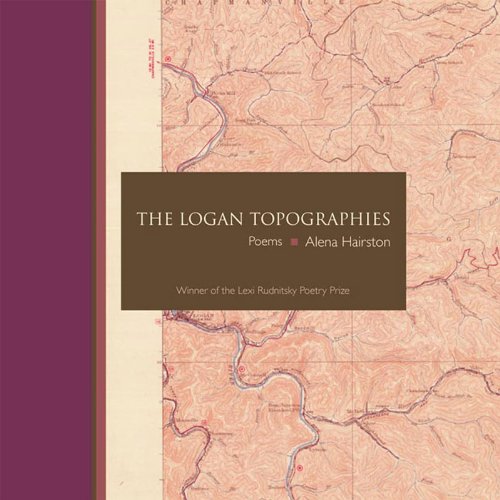One reality of the United States is that in many regions the appellation Bottom identifies an historically African American community. Across the generations this term has had political and psychological, as well as geographic, significance; African Americans, historically segregated to the low end of social and economic opportunity, have lived in the “Bottom.” In titling the last section of The Logan Topographies “The Bottom,” Alena Hairston crystallizes the fecund interconnections of history, genealogy, geography, subsistence, and worldview that define the community of Logan, West Virginia. These interconnections outstrip any one community and move across several generations, making Logan, in this work, a refreshingly full version of the American working-class town.
Hairston’s brilliantly conceived debut poetry collection is a complex and sprawling poetic sequence exploring Logan’s social history, which includes American immigrants of every color and Native Americans and coal miners and war and highways… and is all the more remarkable because of Hairston’s own pied emotions. Logan is a town that she loves, but that she loves neither in a wholly idealizing manner of nostalgia nor simply in a mood of righteous indignation over what it means to be a poet shaped by the varied experiences of the working class and working poor in a small mining town.
One feels in reading Hairston’s unfurling variegations on Logan that she speaks in a voice attuned to the future of the place as much as to its past: “people take here. people taken here. people come here. people left here. / People return here. People stay here.” The deliberate drift of verb tense suggests that the poet’s concern in writing on Logan is driven by more than either wistful longing or cultural memory. Logan is a real place for Hairston and so for her readers—it is a living town of the contemporary world, one whose history reaches up from early American slavery through the Mingo Wars of the nineteenth century and on to today.
Hairston’s is a dazzling new voice in American poetry, and if she continues to write with such poignancy and brio on West Virginia, I would not be surprised if before long it becomes a major region in U.S. poetry, perhaps sharing space with Charles Wright’s Appalachia, Gwendolyn Brooks’s Chicago, William Carlos Williams’s New Jersey, and Sterling Brown’s Deep South. Hairston’s supple, expressive free verse has a “topography” as striking and distinctive as the landscape she describes. This topography is defined by the poet’s own emotional associations with Logan as much as by the persons, cultures, and events there. Nowhere is the poet’s inhabiting of the place clearer than in “The Bottom”: “Despair is a thing of time, a commodity of idleness or wealth. If there is room / for it here, then it is not known by its name. Life lives on any track: its taking / willed, its giving silent. Bottomers do not always look up, for what is up / has already been down, is bottom-up.”
I wonder how many other citizens of Logan will read Alena Hairston’s poem? Will encounter the profound love she shows for the town, the beguiling delicacy of her writing? For those of us not from Logan, what Hairston expresses may register at a deep level, because, for this poet, the town is its history: its happenings, its people, their mores—it is distinct and characteristic, more than local because as a home in the U.S. it resonates with the very fabric of national identity.





